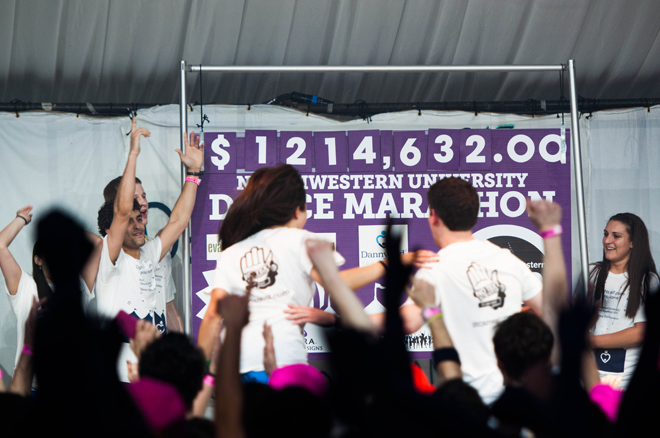Whether you belong to the 120 Hour Club or plan to spend the weekend blissfully lying in bed, you can't deny Dance Marathon’s importance in Northwestern history. To celebrate DM’s 40th birthday, North by Northwestern looks back at its evolution through the ages.
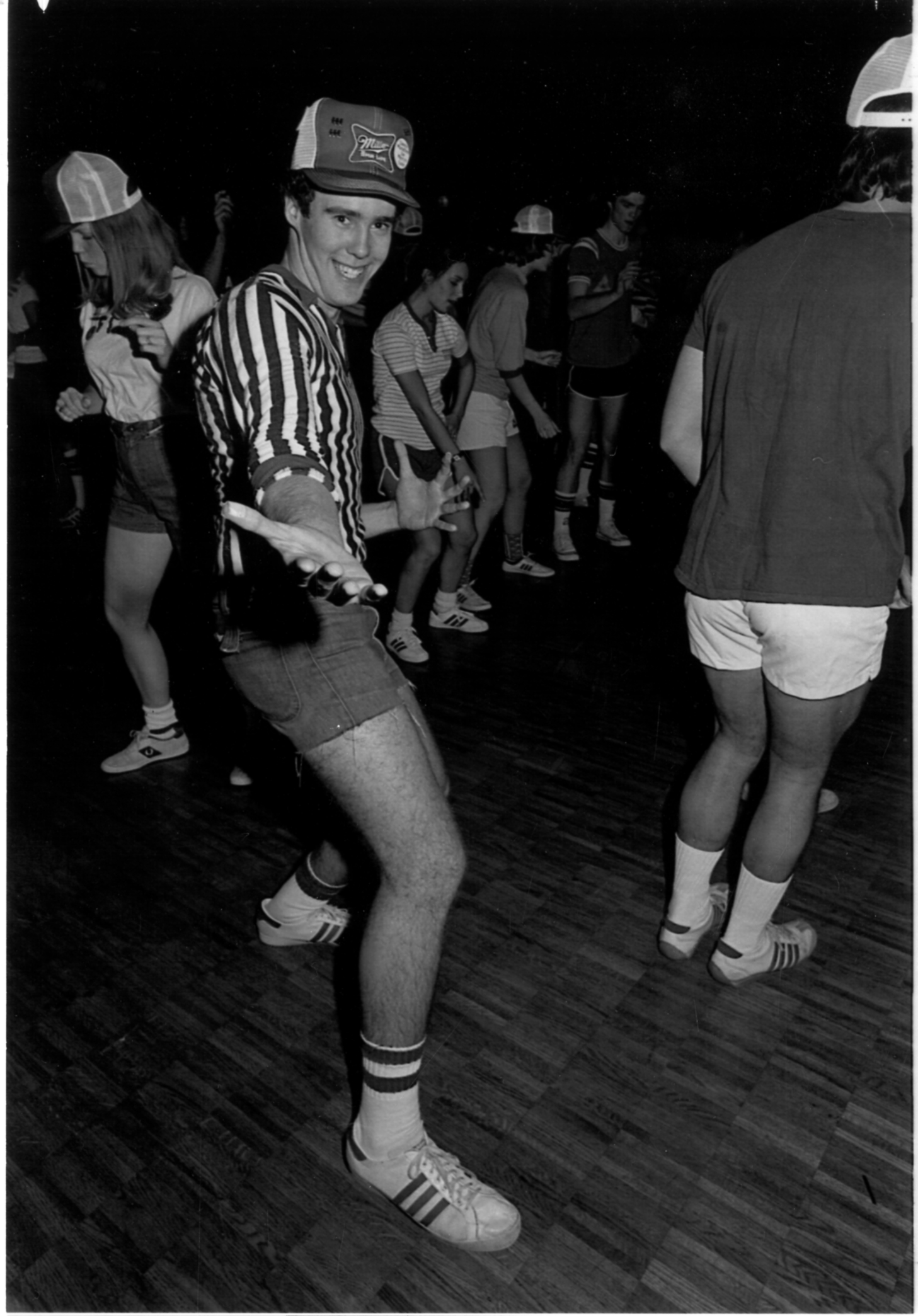
1975
When Roy Elvolve decided to organize Northwestern’s first Dance Marathon in 1975, he had no idea what he was unleashing. Elvolve, DM’s first Publicity Chair, joined what would become NU’s biggest fundraiser simply because he had “a lot of time to burn,” he later told student reporters.
Elvolve belonged to the Alpha Tau Omega fraternity, who partnered with Associated Student Government to run what was originally called “Dance to Give Them A Chance.” The dancers hoped to raise $10,000 for the American Epilepsy Foundation and the National Association of Retarded Citizens (now known as the Arc).
Held in the then-new Blomquist Memorial Gymnasium, paired dancers competed to see who could dance the longest. While the dance technically lasted 52 hours, dancers really only stayed on their feet for 30 hours, thanks to two seven-hour naps and multiple half-hour breaks. While over 50 pairs initially competed, only 15 boogied to the bitter end. The winning couple advanced to another dance marathon at University of Illinois Urbana-Champaign.
1977
Universities across the country had begun their own dance marathons, of varying lengths and rules, and it quickly became clear that Northwestern’s marathon was here to stay. After a few name changes, Northwestern permanently adopted “Dance Marathon” as its fundraiser’s moniker.
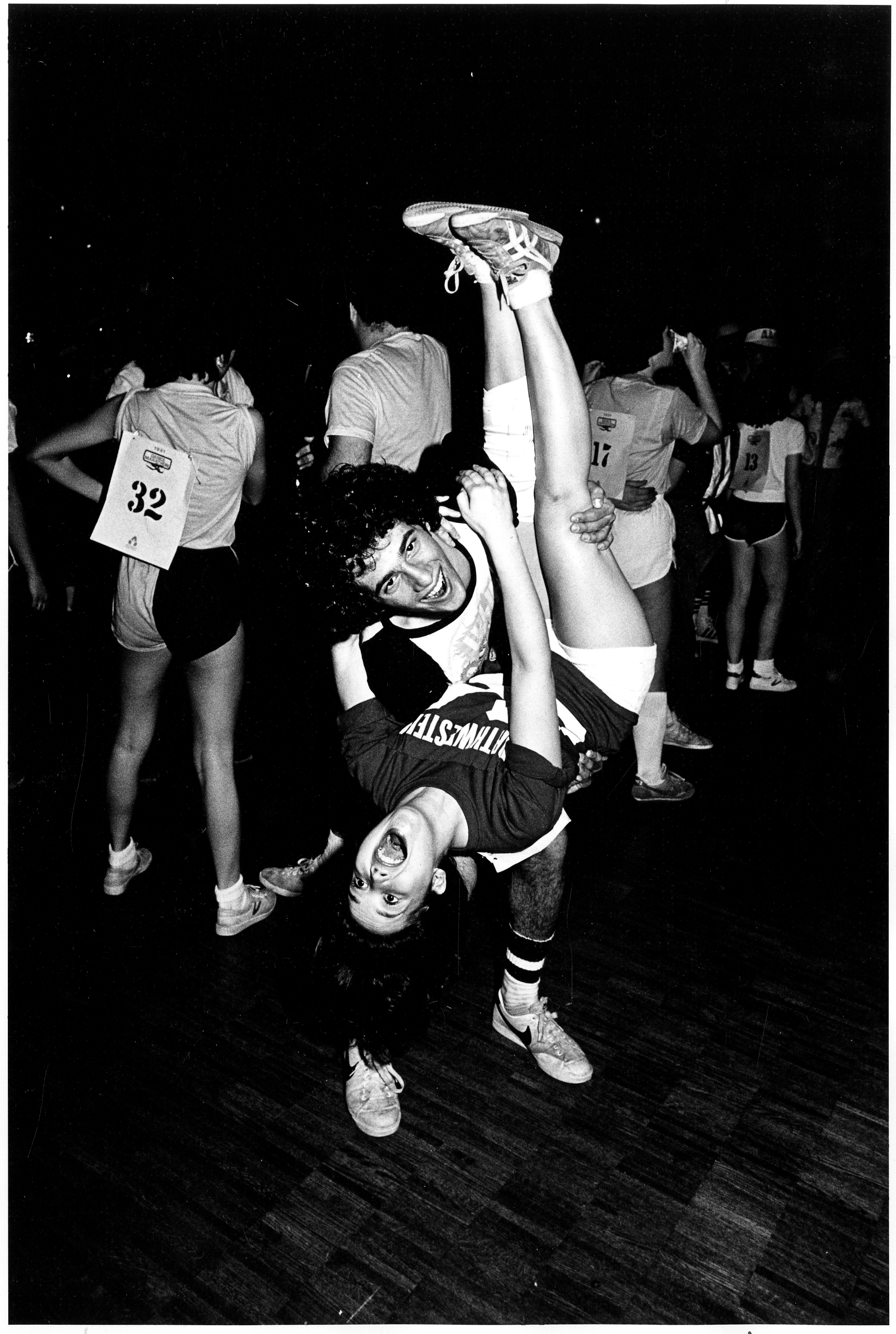
1978
While this weekend’s DM dancers know there is no way out of the tent, DM once extended throughout Norris University Center. For 30 hours, Norris was transformed into a carnival: there was casino blackjack, musical theater, even a spa – complete with showers – for students to enjoy.
“There’s so much to do at the Dance Marathon, you might just forget to dance,” proclaimed a 1978 DM ad.
1981
Over the next few years, DM underwent numerous facelifts, settling into its modern-day form in 1980. Nap and shower breaks were abolished, and DM was officially shortened to 30 hours.
Thanks to the younger drinking age, liquor was also a component of many DM activities. Resident assistants played DM-sponsored games to raise dorm morale, and the prizes often included wine and beer for their home dorms. In fact, Miller Beer often sponsored DM.
1987
While dancers can now have cookies delivered to them in the tent, 1987 dancers could receive a much better surprise: a “Flash o’ Gram.” Wrapped in trench coats, students ran into the Louis Room and gave dancers a glimpse to shock them awake. Dancers could also be “lei-ed”—students draped Hawaiian leis over their favorite friends.
Why these gifts did not become traditions remains a question for the ages—especially when one considers that 1987 was the first year DM’s fundraising was over five figures.
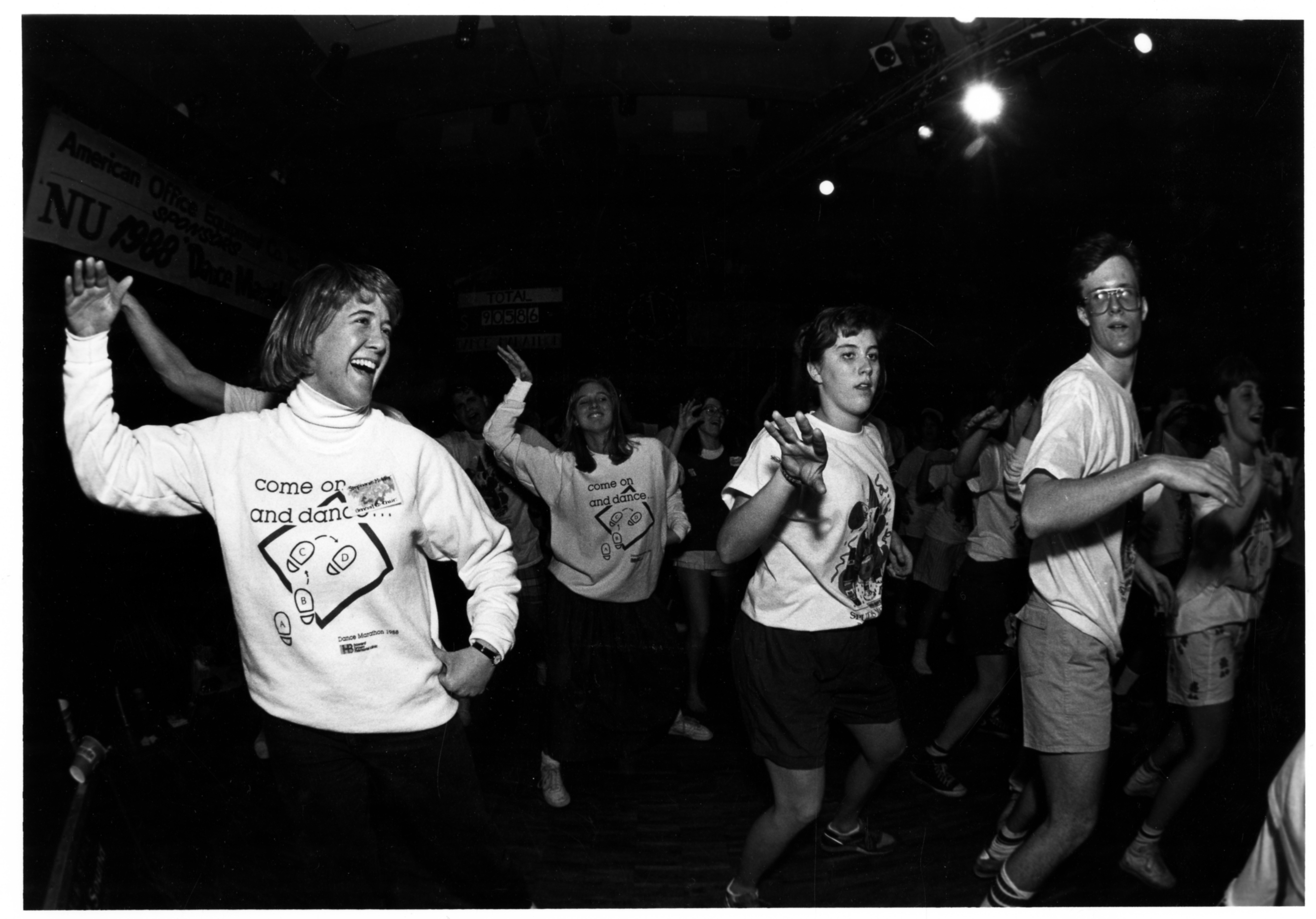
1993
Since, DM’s fabled tent didn’t exist yet, dancers boogied in Norris’s Louis Room. During the 1993 DM, movies like “Grease” and “Footloose” were screened. Even episodes of “Schoolhouse Rock” played, allowing dancers to rock out to “I’m Just A Bill.”
1997
The late ‘90s changed DM’s fundraising goals forever. The Evanston Community Foundation, an initiative dedicated to championing Evanston community projects, became a permanent DM beneficiary in 1997. That same year, the Gus Foundation became the first small non-profit that DM fundraised for. While DM had once danced for huge organizations like Make-A-Wish, it now realized that by helping out smaller organizations, Northwestern’s donation would mean that much more.
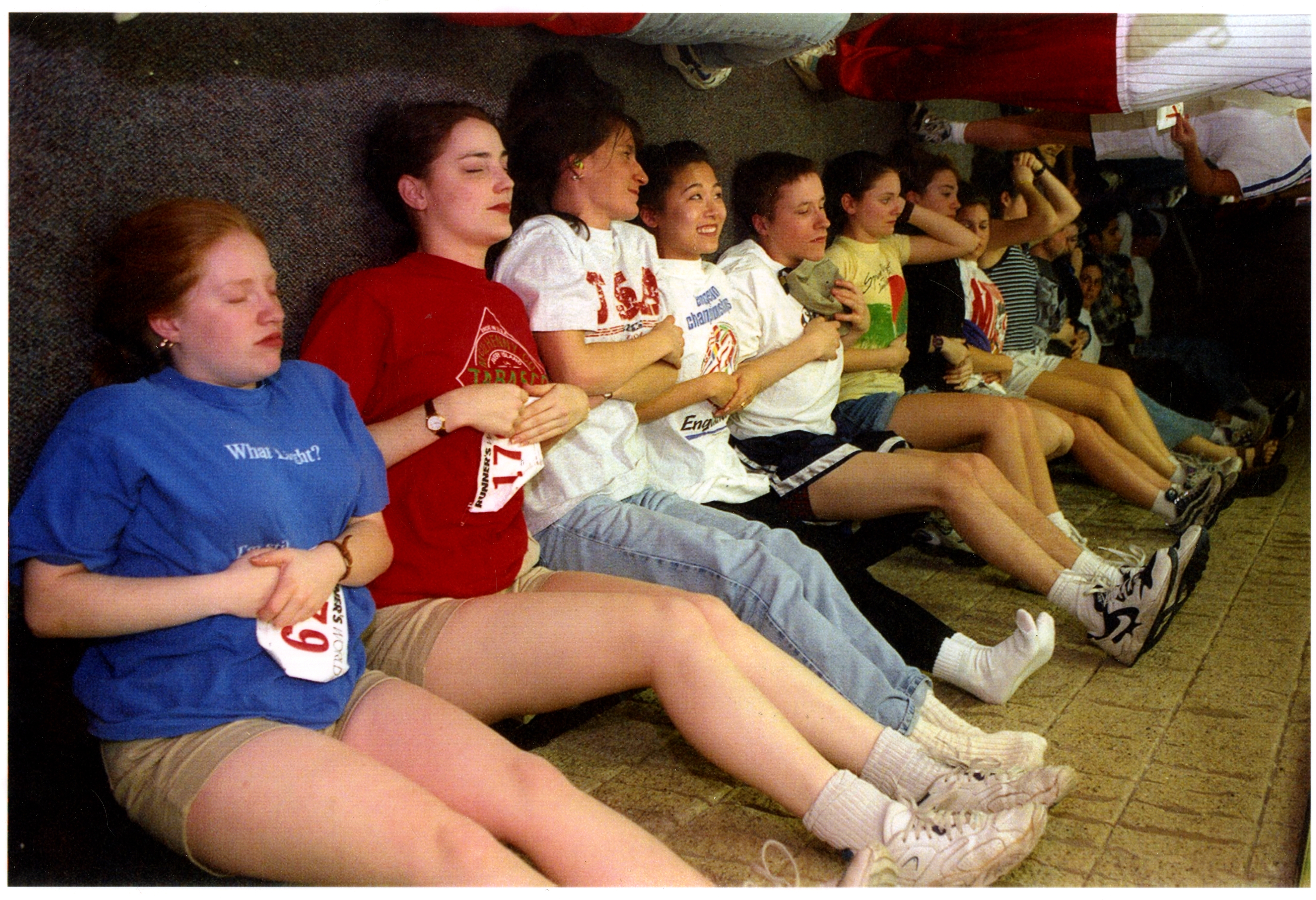
2000
The new millennium ushered in DM’s first female emcee, Ginger Harreld. To get the job, Harreld and her male emcee partner performed a faux-striptease. Though they wore black clothes underneath, their dedication still entered DM emcee lore.
For many years, DM held annual date auctions at the Keg – but despite the hundreds of dollars these auctions raised, few bids ever led to actual dates. However, one couple from the 1999 auction reported still living together in New York one year later.
2009
So many dancers joined the 2008 DM, they could no longer fit into the Louis Room. The following year, DM’s now-legendary tent – feared and loved in equal measure – was first erected on the Norris Lawn.
2011
Perhaps the most important milestone in DM’s history occurred in 2011, when the organization raised over $1 million for the first time. Since then, DM’s fundraising total has steadily increased – a feat DM hopes to repeat this weekend. Whether you belong to the 120 Hour Club or plan to spend Saturday binge-watching Netflix, you can’t deny that dancers’ many tears of exhaustion and joy are worth it. As long as there are causes to fight for, Northwestern will not stop dancing.
